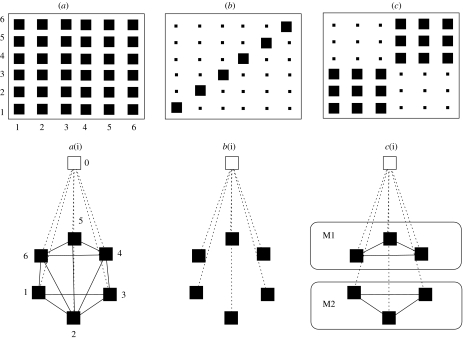Figure 3.
(a) Correlation matrix indicating by the size of black squares the magnitude of correlation or mutual information between pairs of nodes of the signaller. Here, all nodes are perfectly correlated in their activity. (a(i)) The perceptron connectivity corresponding to the correlation matrix (a). (b) Signaller nodes are only weakly correlated with each other and constitute approximately independent channels (b(i)) for the receiver to integrate. (c) Channels form correlated clusters of activity, with weak correlations among clusters. This corresponds to a two-modality signalling system (sets of channels M1 and M2). The two-modality case is both more robust and more complex. Robustness derives from insensitivity to channel occlusion through channel redundancy coupled to high information flow through weak modality decoupling.

